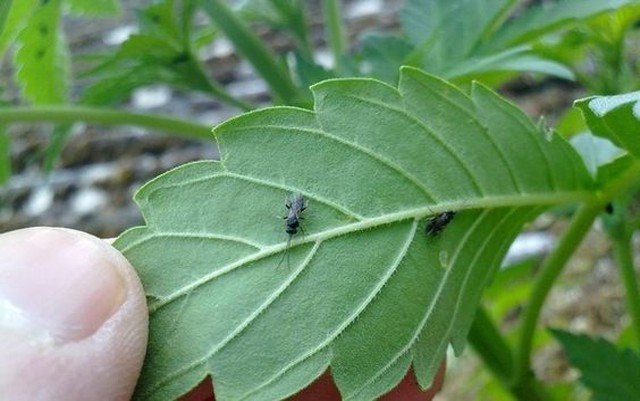It’s Not a Bug, It’s a Feature
Free Fungus Gnat Larvae Included With Every Bag of Potting Mix!
Wow, such a deal! Has it happened to you? A shopping trip to the local big box home improvement garden center finds you happily loading up your cart with jumbo bargain bags of indoor or outdoor potting pre-mix. Hey, it’s only five bucks or so for two or three cubic feet of composted grain hulls, ground forest product, peat, Perlite and maybe a sprinkle of bat guano for some satisfying stinky nutrition. There ought to be a truth in labeling law so these bags scream like children’s breakfast treats: “Free Bonus Prize Inside – Fungus Gnats !” If you must grow Cannabis indoors in soil, please only use pasteurized/sterilized potting mix or practice soil solarization to cook and kill off harmful unwelcome freeloaders.
No doubt you’ve encountered the tiny pathetic adults flying towards or crawling erratically on your grow room windows and taken evil satisfaction at the ease with which they are mercilessly squished. At this stage of their lives Fungus Gnats are annoying but harmless (if you ignore their reproductive activity) as they fly only to seek out a mate or lay eggs and do not eat anything. As with Whiteflies, Fungus Gnats adults can be monitored and partly controlled with yellow sticky traps, but the traps must be placed near the soil level (not in the canopy), there are numerous springy clippy holders you can purchase for proper positioning.
It is the nearly microscopic larvae of Fungus Gnats that you’ll be doing battle with. (http://www.ipm.ucanr.edu/PMG/PESTNOTES/pn7448.html) As the name implies; Fungus Gnat larvae feed on fungus, and you might be tempted to think “so what, that’s a good thing, right?” Not exactly. There’s bad fungus, which the Fungus Gnats are welcome to, and then there’s good fungus. Recent research indicates that Cannabis is an obligate mycotroph, meaning that while most plants establish beneficial symbiotic relationships with mycorrhizae, Cannabis root hairs (in soil) go a step beyond and are actually dependent on fungi hyphae and vesicles for optimum nutrient uptake, especially phosphorous. Fungus Gnat larvae also feed on or damage Cannabis root hairs, magnifying the damaging effects which present vaguely as a lack of vigorous growth or even damping off and death of young seedlings. The scariest thing about Fungus Gnats is that they can be a disease vector for a wide range of pathogens including Botrytis.
Over-watering creates the optimal, always moist conditions for serious infestations of Fungus Gnats to take hold, so don’t love your Cannabis to death. Let the top half inch or so of soil dry out between waterings and if possible water from the bottom. Consider applying a barrier layer of diatomaceous earth to the soil surface. The infinitesimal shards of fossil diatom shells/skeletons are deadly sharp to Fungus Gnat larvae. A special form of Bt, similar to but distinct from what you’d employ against caterpillars is found in mosquito dunk style products; it is the Bacillus thuringiensis subspecies israelensis (Bti) and can be found in merchandise such as Gnatrol . I’ve had some limited success controlling Fungus Gnat larvae with a dilute application of hydrogen peroxide. Outdoors, natural predators should keep this pest under control without much human intervention.
Disclaimer: Any advice and opinions offered about the cultivation of cannabis by Bruce N. Goren are his own and do not represent the University of California or the Master Gardener Program.






